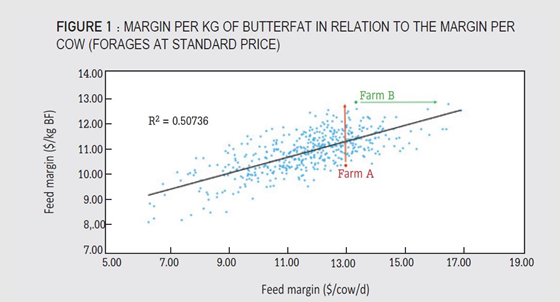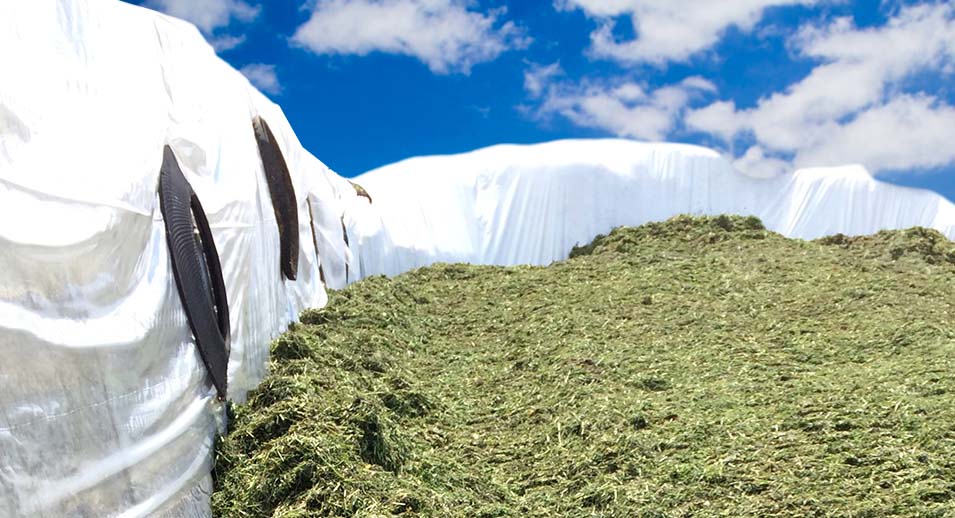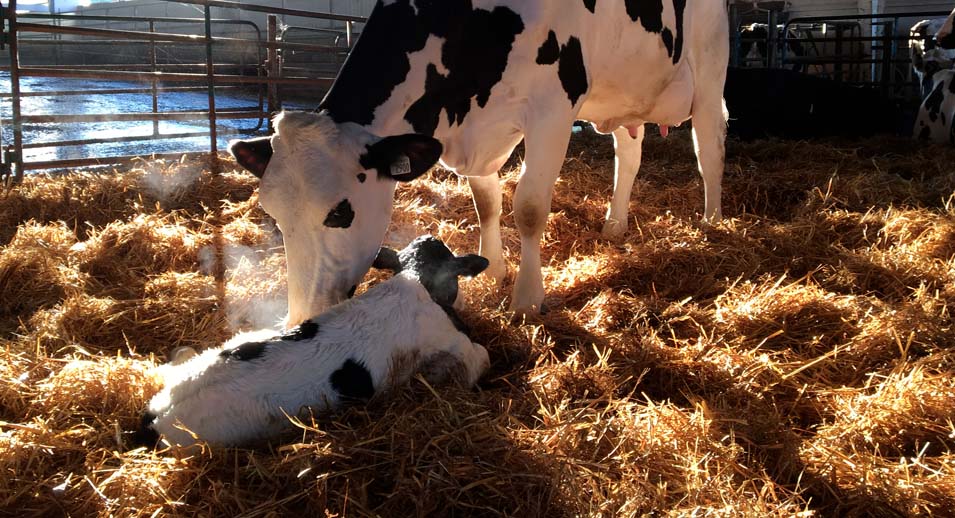The feed margin: a good indicator of herd profitability?
- 4 May 2020
- Le Producteur de Lait Québécois Magazine
When it comes to business, what matters isn’t the cost or the return but rather what is left in your pocket! It’s no wonder that the word “margin” is becoming more and more common in discussions between dairy farmers and their service providers.

Business leaders need no reminding of the importance of calculating their profit margin. Not only do they check these figures regularly, they also compare their results with industry benchmarks; not to brag but rather to make sure their farm is not losing ground and to target opportunities for improvement. To do that correctly, however, it’s important to compare apples to apples. And that’s where things get complicated.
Choose a simple and useful indicator
We’ve all heard about the margin over concentrate costs, the feed margin, the contribution margin, and so on. The difference between these margins resides in what is considered as revenue and expenses in the calculation. The more information included, the more accurate the assessment of an operation’s overall performance.
But updating the information for every calculation can be time-consuming. Producers tend to get discouraged and eventually give it up. Limiting the amount of information required makes the task less complex, so the exercise is more likely to be repeated regularly, and producers can quickly see if their situation is deteriorating. Hence it’s not only important to choose a simple indicator, but also one that conveys useful economic signals.
Feed margin in relation to production costs
The margin over the cost of feeding the cows is what we are looking for here. Given that milk sales account for the bulk of farm earnings, and that feed costs represent 43% of production costs (Agritel1, 2018), tracking the feed margin allows you to keep an eye on a significant portion of what constitutes the overall margin of you operation.
To assess the performance of one herd against that of others, the data needs to be brought back to a per-unit basis. Thus we talk about the margin per hectolitre produced, per kg of butterfat produced or shipped or held (quota), per lactating cow or per cow present (including dry cows).
Margin per kg of fat or per cow?
Do we really need to calculate all these indicators to manage a farm properly? Of course not. So which ones do we need? Here’s where we open Pandora’s box: for some, it’s the feed margin per kg of butterfat (BF) that is critical, because it corresponds to the farm’s right to produce (production quota); for others, it’s the per-cow calculation, because this represents the profit per stall, an indicator of operational efficiency. So who is right?
I checked with Agritel, and Figure 1 shows what I found in the 2018 data for 488 specialized dairy farms. Each blue diamond represents a dairy operation, while the black line shows the overall trend. Although not perfectly proportional, the two margins clearly follow the same trend: no contradictions, just slight differences in the interpretation of the results. The two margins could even be combined to identify priorities for action. Since both these indicators are largely based on the same information, the two can easily be calculated simultaneously.

So Farm A has a margin of $13/cow/day, but only $10.40/kg of butterfat. In comparison, another herd shows $12.40/kg of butterfat for the same $13/cow/day. The producer on Farm A should look for ways to reduce feeding costs and increase the profitability of his quota.
Farm B, on the other hand, has a margin of $12.80/kg of butterfat, but only $13.30/cow/day. Other herds do just as well in terms of $/kg of fat while topping $15/cow/day. In this case, the producer on Farm B should look for ways to increase milk production to make the farm’s facilities and workforce more cost-effective. It’s worth noting that Farm B will need to buy more quota to achieve its objective, while Farm A will not.
What about the cost of producing forage?
Although it’s a good starting point, a high feed margin doesn’t guarantee the operation will see a profit at the end of the year. Since forages make up 50% of the cost of feeding a herd, higher than necessary production costs in the field could cancel out great performances in the barn. That’s why it’s important to take a moment at the end of every year to calculate your forage production costs and, if necessary, take action to reduce them. Even if you don’t know specifically how much your forage production is costing you, it is preferable to calculate your feed margin using a standard cost for on-farm forage production than not tracking it at all.
Are you ready to take on the challenge of calculating your margin?
When taking a closer look at Figure 1, it’s clear that there are major discrepancies between the best and worst results, and this is true regardless of the indicator used. If more producers took the time to calculate their margin on a regular basis, chances are those differences would diminish. So the challenge is on!
Where should you begin? Talk to your Lactanet representative, who has all the tools required and can help you gather the information you will need. That way you can continue to track your margin even during your busiest periods when there aren’t nearly enough hours in a day!
So, remember to keep a close eye on your margin: it’s the key to profitability at the end of the year.
Coût à la baisse et performances à la hausse
1 VIA Pôle d’expertise en services-conseils agricoles database











